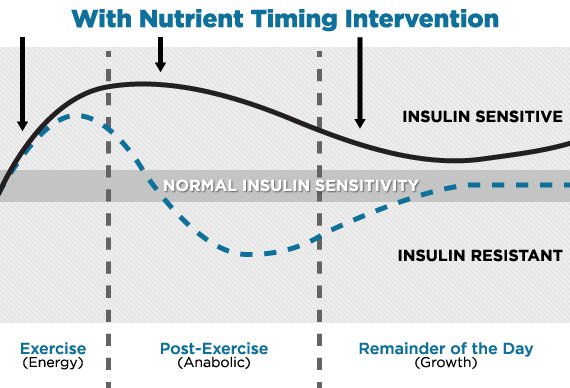My goals right now revolve mainly around developing my chronically puny back. How can I gear my nutritional intake to help me?
When it comes to training and developing lagging body parts, the principle of muscle priority is generally seen as the standard approach. Muscle-prioritizing works, whether you add extra sets or extra workouts dedicated to making your back bigger and stronger. However, it works best when it goes hand-in-hand with nutrition.
If you are giving your back extra attention through increased volume and/or frequency, then you should give your body extra fuel and attention to recovery. By doing so, you'll be able to accelerate the growth and development of your back so it responds to the increased training and attention, as you'd hope it would.

Apply these strategies to your current mass-building nutrition protocols to make them more effective. Hone in on developing greater size, thickness, and strength to your back.
Pre-workout stimulants are all the rage, and they definitely have their use. I don't recommend using them every time you train. After a few weeks taking pre-workout supplements on a regular basis, you'll probably notice that the incredible boom in energy you once experienced gets harder and harder to find.
To maximize the effect of pre-workout stimulants, I recommend that you save them for body part-specific sessions. This will give you a noticeable boost when training the body parts you specifically try to grow, in this case your back. The added push during these training sessions will further drive your efforts to overstimulate your back, setting the stage for our prioritized recovery strategies.
During Training
If your training session lasts longer than 45 minutes, then you need intra-workout fuel. As a rule of thumb, you oxidize about 1 gram of carbohydrates per minute of exercise. But you don't need to provide all this fuel for your body during this time, because you want to use some muscle glycogen. I recommend taking 30-45 grams of carbohydrates per hour of training.
The range depends on body type. Ectomorphs can aim for 45 grams, while endomorphs use 30 grams. In addition to these carbohydrates, round out your intra-workout anabolic cocktail with 10 grams of BCAAs.
Post-Workout Refueling
If you have already pre-fueled and fueled your body before and during training, refueling isn't as crucial as it would otherwise be. However, it is still important to take advantage of your body's increased susceptibility to nutrient absorption post-workout.
Directly after you exercise, glucose uptake is increased, glycogen storage is increased, amino acid uptake is increased, and protein synthesis is also boosted. By taking advantage of this post-workout refueling window, you can improve your insulin sensitivity over the next several hours. The chart below is adapted from John Ivy and Robert Portman's book Nutrient Timing. It shows how proper refueling post-workout increases insulin sensitivity (solid line) compared to not refueling (dotted line).

Continued Feeding and Recovery
No matter how intensely you train, or fuel around your training, both represent a small fraction of your total time and nutrition. How you eat outside of training is still hugely important, and this starts with your first solid post-training meal.
Most post-workout shakes consist of fast-digesting and insulinogenic carbs like dextrose and maltodextrose, which cause your blood sugar levels to rise quickly. The downside is that they will also fall quickly, so you need to be ready with a solid meal to stabilize your blood sugar levels and start the recovery process. One of my favorite means for this time period is simple, but nutrient-packed: two yams with coconut oil and a grilled top sirloin.
In the 24 hours following your back training sessions, add an additional 500 calories to your current mass-building diet to compensate for the additional training and to support extra growth. Ideally, at least 160 of these calories will come in the form of 40 grams of casein protein taken before you go to bed. The science is pretty clear: Casein at this time can increase protein synthesis while you sleep by more than 25 percent.

From a recovery standpoint, you need rest in addition to your nutrition. If you train your back with increased frequency—which you should, because frequency is a major determinate of hypertrophic response—then you need to prioritize deep sleep. Deep sleep comes toward the end of your sleep cycles, which are generally 90 minutes in length. So in order to maximize the physical restorative properties of sleep, aim to add an extra 90 minutes of sleep to your nightly routine. If it is not possible to do this every night, at least add 90 minutes on the nights after you train your back.
Aside from improving your recovery, working an extra sleep cycle into your nightly routine will help you reap other benefits, such as enhanced motor skills. For a lifter, this translates to increased muscle control and better form, which means being able to lift more weight and stimulate more growth.
